Teacher Universities. The largest group of animals on earth
Topic: “These funny animals.”Target:
1. Instill interest in the surrounding world (animals).
2.Develop logical thinking, memory, intelligence, ingenuity.
3. Foster a sense of unity and empathy.
During the classes.
I. Organizational moment.
The theme song “In the Animal World” plays.
After watching this video, you probably already guessed that our extracurricular activity will be dedicated to “animals”.
II. Reading poems.
1 student:
Everything in the world
We need!
And no less midges
Needed more than elephants.
Can't get by
Without ridiculous monsters
And even without predators
Evil and ferocious!
2nd student:
We need everything in the world!
We need everything -
Who makes honey
And who makes the poison.
Bad things
A cat without a mouse,
A mouse without a cat
No better business.
Teacher: So, we start our quiz!!!
Now let’s introduce our esteemed jury:
1 competition “Team Presentation”.
2nd competition “Warm-up”.
Each team is asked 10 questions. For each correct answer the team receives 1 point
Questions for 1 team.
How many legs does a cockroach have? (6)
The largest animal on earth? ( blue whale)
What insect feeds on blood (mosquito, flea, gadfly)
Who hatches from a butterfly egg? (caterpillar)
What animal can turn its head 180 degrees? (owl)
Who is called the harbinger of spring? (rooks)
Which is a reptile: a frog, a turtle, or a newt? (turtle)
The only type of animal whose body is covered with feathers is ... (bird)
What bird doesn't hatch its chicks? (cuckoo)
Is this animal a symbol of Kazakhstan? (Leopard)
Questions for team 2
Why do birds fly south? From cold or from hunger? (from hunger)
What animals fly? (bat)
Beekeeper's farm. (apiary)
The largest rodent that most spends his life in water? (beaver)
Why was the red book called that, and not yellow or blue? (red color – attention, stop, don’t kill animals)
Name an animal that releases a strong-smelling substance when danger approaches? (skunk)
What animal leads an underground lifestyle? (mole)
The most large group animals on the planet known to you? (insects)
Which animals have an elongated and streamlined body covered with slippery scales? (fish)
Habitat of the grape snail? (leaves)
Questions for team 3.
Periodic change of external integument in animals? (molting)
The most big snake in the world? (anaconda)
Flightless bird of Antarctica? (penguin)
Australian herbivorous marsupials? (kangaroo)
The fastest animal on earth? (cheetah)
How many legs does a spider have? (8)
A territory in which all human activity is prohibited? (reserve)
You found baby animals. Your actions? (pass by)
How many nature reserves are there in Kazakhstan? (9)
Which of the following animals live in families: flies, bees, midges? (bees)
3 competition “Troubles from a barrel”.
We moved on to the third round. Now I will take words out of the barrel, but all the letters in them are mixed up. Your task: rearrange all the letters in the right order and get the name of the animal, which is encrypted here. For the correct answer, each team receives 3 points.
AKGULSHK – FROG
BDEVLRYU – CAMEL
YAABNYZOE – MONKEY
AGPYOU – PARROT
OGORSON – RHINO
EGEBTOM – BEHEMOTH
4th competition “Questions to your opponents”.
Ask your opponent a question. For a correct answer, the group receives 3 points. You only have one chance. An incorrect answer means the turn goes to another group. So, let's begin….
1st group – 2nd group – 3rd group.
This animal feeds on fish and animals, preferring rotten meat. What kind of animal is that? (crocodile)
What do you call people who offend animals and fish in prohibited places? (poachers)
Group 2 – group 1 – group 3.
What is the lifespan of a cat? (15 years)
Which animal is considered sacred in India? (cow)
Group 3 – group 1 – group 2.
What is the largest bird in the world? (African ostrich)
What animals can change their color? (chameleon)
5th competition "Word-composition".
The word “ANIMALS” is written on the board, I add two more letters “A” for you. Try to form other words from these letters in 1 minute. Each of them will bring your team 5 points. Time has passed...
6th competition “Riddles”.
Your task is to guess what animal the riddle is about. For the correct answer you bring the group 5 points. If you translate the answer into Kazakh, you get an additional 5 points.
1. Stroking - caresses,
You tease and it bites.
(Dog - it)
2. Eyes, mustache, tail,
And he washes himself cleaner than everyone else.
(Cat - mysyk)
3. Forest owner
Wakes up in the spring.
And in winter there is a blizzard howl,
He sleeps in a snow hut.
(Bear - ayu)
4.He walks proudly in the forest
And he doesn’t take his eyes off you.
His horns are strong
And he is a beauty of the forest.
(Deer - bugs)
5. Who deftly jumps through the trees
And flies up into the oak trees?
Who hides nuts in a hollow,
Drying mushrooms for the winter?
(Squirrel - tiin)
6.Taller than a cat
Lives in a hole in the forest,
Fluffy tail beauty
Oh, red...
(Fox - tulki)
7.Long ear,
A ball of fluff,
Jumps deftly
He's nibbling on a carrot.
(Hare - koyan)
8. Doesn’t look like a shepherd
Every tooth is a sharp knife!
He runs with his mouth bared,
Ready to attack the sheep.
(Wolf - kaskyr)
9. Striped, powerful beast
He walks quietly, timidly.
He kills animals
Run away as quickly as possible.
(Tiger - Zholbarys)
7 competition “Find the animal”.
Find the names of the animals in the following sentences.
Everyone agreed with me, but not my friend Sasha. (CATFISH, RACCOON)
The flowers were in a vase, the sconce was on the table. (ZEBRA)
The fisherman had already lied, but still stuck to his guns. (UZH, HEDGEHOG)
During labor lessons we sewed dresses. (MICE)
8th competition “Collect the titles of the work.”
Each team is given cut names of works where animals are found, whoever collects it faster wins.
Ivan Tsarevich and the Grey Wolf.
White poodle.
Fox and crane.
Hedgehog in the fog.
The wolf and the seven Young goats.
Gray neck.
Frog traveler.
9 competition "Final".
Look, guys, we came across a treble clef on our way - this is a musical pause. While the jury members sum up the results and determine the winners, we will listen to the song “Don't tease the dogs.”
- Meet and support our performers with applause...
Don't tease dogs.
Verse 1: Don't tease dogs
Don't chase cats.
Don't be sorry for the birds
No grain, no crumbs!
And then the sparrows
They'll wake you up with a song.
And scratch and bite,
Nobody will be there for you!
Verse 2: If you make a lot of noise
Near the den,
You'll have to later
Blow your feet!
And the bee just like that
It won't stick either.
After all, both sting and growl
No one will do it in vain!
Verse 3: No need to offend
Butterfly on a branch.
More fun in the forest
From its colors!
Don't scare the bugs
With a long mustache.
And believe me, the bugs
They won't touch you!
Verse 4: If you like
Earthly beauty.
Take care of her
Tired of not knowing!
Surely then
We'll become friends.
And about cats and dogs,
Sing along with us!
III. Summary of the lesson. Reflection.
Now the jury will name the total number of points for all rounds and sum up the results of our extracurricular activities.
The jury's word...
The jury names the winners and presents certificates.
Student 1:
On the same planet
The children lived together.
Birds' nests were not destroyed
For a few eggs.
Didn't catch it in the oak forests
Red squirrels for fun,
The grass was not trampled,
The rivers were not polluted!
Everything is done diligently and wisely
Take care of your common home
Called Earth
Where both you and I live!
Student 2:
Take care of the earth! Take care
Lark at the blue zenith,
Butterfly on dodder leaves
There are sun glares on the thawed patches.
A crab playing on the stones,
Over the desert the shadow of the baobab tree,
A hawk soaring over a field
A clear moon over the river calm,
Student 3:
A swallow flickering in life,
Take care of the earth. Take care!
Take care of this land, this water,
I love even a small epic.
Take care of all the animals of nature,
Kill only animals
Inside yourself!
It contains photographs of fifteen of the largest animals in the world, divided into various categories such as mammals, reptiles, birds, amphibians, etc. Some of these animals are real giants!
1. The largest animal in the world is the blue (or blue) whale.
The blue whale, also called the blue whale or vomit whale (Balaenoptera musculus) is marine mammals, which belongs to the order of cetaceans in the suborder of baleen whales. Reaching 30 meters (98 feet) in length and weighing 180 metric tons or more, it is the largest animal known to have ever lived on our planet. A blue whale's tongue can weigh about 2.7 tons (5,952 pounds), which is approximately the same weight as an average-sized Asian elephant. Heart blue whale weighs about 600 kilograms (1,300 lb) and is the largest such organ of any living thing. The heart of a blue whale is not only the size of a small car, but it also weighs about the same as the mentioned car. And the volume of a blue whale’s lungs exceeds 3 thousand liters.
2. The blue whale is thought to feed almost exclusively on small shrimp-like creatures known as krill.
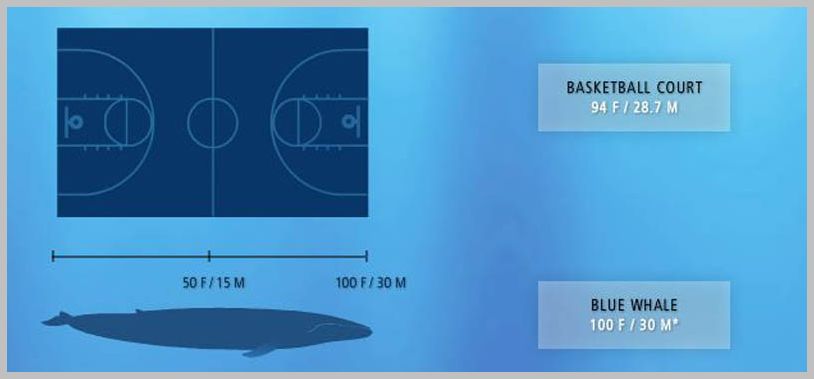
3. The diet of the blue whale is based on plankton. Thanks to its filtering apparatus, which is composed of baleen plates, the blue whale can consume a whopping 3.6 metric tons (7,900 pounds) or more daily during the summer months.
4. This means that it can eat up to 40 million krill per day, while the daily caloric requirement of an adult blue whale is in the region of 1.5 million. kcal


6. The largest land animal in the world: African elephant. The African elephant is the largest land animal. Male African elephants reach 6 to 7.5 meters (19.7 to 24.6 ft) in length, 3.3 m (10.8 ft) high at the withers, and can weigh up to 6 tons (13,000 lb). Female African elephants are much smaller, measuring on average 5.4 to 6.9 m (17.7 to 22.6 ft) long, 2.7 meters (8.9 ft) high at the withers, and weighing up to reach 3 tons (6600 lb). Adult African elephants generally have no enemies in their natural habitat due to their extremely large size, but baby elephants (especially newborns) are one of the favorite prey species for bloodthirsty attacks by lions or crocodiles, and are also often attacked by leopards or hyenas. According to the latest data, in wildlife The population of African elephants ranges from 500 to 600 thousand individuals.
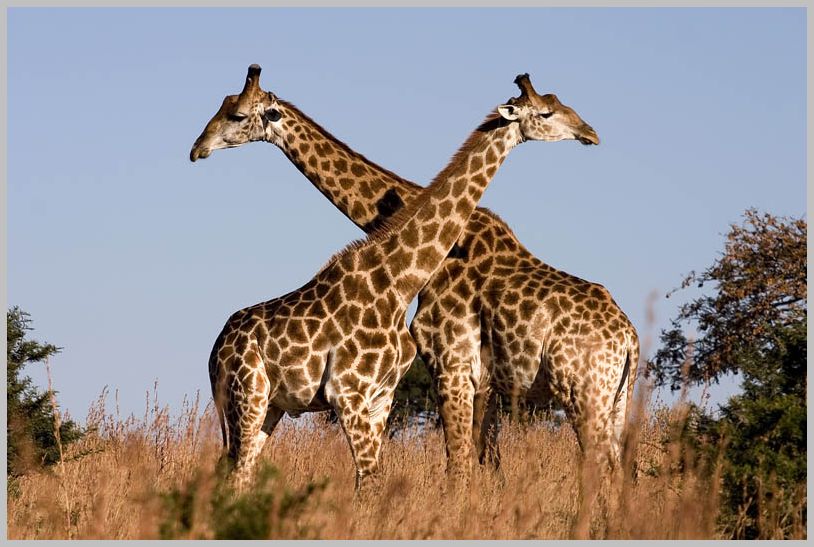
7. Tallest land animal in the world: giraffe.
The giraffe (Giraffa camelopardalis) is an African mammal from the order of artiodactyls of the giraffidae family. It is the tallest land animal in the world. its height averages 5-6 meters (16-20 ft). Male giraffes have an average weight of 1,600 kilograms (3,500 lb), while females can weigh around 830 kilograms (1,800 lb). A distinctive characteristic of the giraffe is its very long neck, which can reach over 2 meters (6 ft 7 in) in length. In fact, the neck accounts for almost half of the animal’s vertical height. The long neck is the result of a disproportionate lengthening of the cervical vertebrae, and not an increase in the number of vertebrae, of which the giraffe, like almost all other mammals, has only seven

8. Top predator in the world: Southern elephant seal.
The southern elephant seal is the largest carnivore on our planet. The size of the southern elephant seal is evidence of extreme sexual dimorphism, the most significant of any mammal, as male southern elephant seals are typically five to six times heavier than females. While females on average can weigh 400 to 900 kilograms (880 to 2,000 lb) and be 2.6 to 3 meters (8.5 to 9.8 ft) in length, male southern elephant seals weigh on average approximately 2,200 to 4,000 kg (4,900 to 8,800 lb) and can reach 4.5 to 5.8 meters (15 to 19 ft) in length. The all-time record holder of the southern elephant seal, shot at Possession Bay, South Georgia, on February 28, 1913, measured 6.85 meters (22.5 ft) in length and was estimated to weigh approximately 5,000 kilograms (11,000 lb).
Southern marines can dive repeatedly when hunting, remaining underwater for more than twenty minutes each time, stalking their prey, squid and fish, to depths of 400 to 1,000 meters (1,300 to 3,300 ft). The documented record for staying underwater for a juvenile elephant seal was approximately two hours. Maximum depth The depth to which southern elephant seals can dive is more than 1,400 meters (4,600 ft).
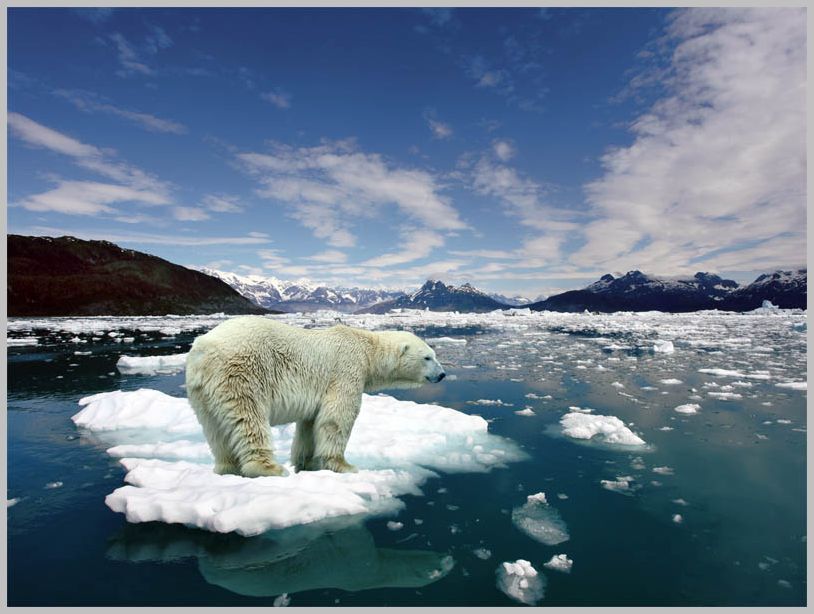
9. Largest land predator in the world: Polar bear and Kodiak bear.
The world's largest land-based predators are the white polar bear (Ursus maritimus) and the Kodiak brown bear (Ursus ARCTOS). If with white polar bear everything is more or less clear, the Kodiak bear is less known.

10. Kodiak is a subspecies of brown bears that are found on Kodiak Island and other islands of the Kodiak archipelago near south coast Alaska. Since polar polar bear and the Kodiak brown bear have approximately the same body size; it is not clear which of them actually takes first place in terms of size. In both species, the height at the withers is over 1.6 meters (5.2 ft), and the total body length can reach 3.05 m (10.0 ft). The absolute weight records for polar and brown bears were 1,003 kg (2,210 lb) and 1,135 kg (2,500 lb) respectively.

11. The largest reptile in the world: Saltwater (combed or spongy) crocodile.
Saltwater crocodile(Crocodylus porosus), is the largest reptile currently existing in the world. The habitat of saltwater crocodiles is the range from Northern Australia before South-East Asia And east coast India. An adult male saltwater crocodile can weigh between 409 and 1,000 kilograms (900-2,200 lb) and is typically between 4.1 and 5.5 meters (13-18 ft) in length. However, males can exceed 6 meters (20 ft) in length and sometimes reach weights of over 1,000 kg (2,200 lb). Nautical saltwater crocodile is the only species of crocodile whose representatives regularly reach a length of 4.8 m (16 ft) and even exceed this mark. The saltwater crocodile is an active predator that feeds primarily on insects, molluscs, amphibians, crustaceans, small reptiles and fish. However, it attacks almost any animal that is on its territory, either in the water or on land. The crocodile always drags the victim it watches on land into the water, where it is more difficult for it to resist it.

12. The largest amphibian in the world: the Chinese giant salamander.
The Chinese giant salamander (Andrias davidianus) is the largest salamander in the world. Individual individuals of Chinese giant salamander can reach a length of 180 centimeters (6 feet), although nowadays giants like these are extremely rare. This species is endemic to mountain rivers and lakes in China. One of the conditions necessary for the survival of the Chinese giant salamander is clean and very cold water.
![]()
13. Today, the species is considered critically endangered due to habitat destruction, pollution and targeted killing, as the meat of the giant amphibian is considered a delicacy and is used in traditional Chinese medicine.

14. Largest rabbit/hare in the world: "Belgian Flanders". The Belgian Flanders is an ancient breed of domesticated rabbit that originates from the Flemish region.

15. They were first bred in the sixteenth century in the vicinity of Ghent, Belgium. Belgian Flanders rabbits can weigh up to 12.7 kilograms (28 pounds).

16. The largest bat in the world: the giant golden flying fox. Pictured: a giant golden flying fox. Spectacled flying fox.
The largest of all bat species is the giant golden flying fox (Acerodon jubatus), an endangered bat species from tropical forests Philippine, which is part of the fruit bat family. The main diet of giant golden flying foxes is fruit. Weight Limit Giant golden flying foxes can weigh 1.5 kg (3.3 lb), can reach 55 centimeters (22 in) in length, and have a wingspan of almost 1.8 meters (5.9 ft). The giant flying fox (Pteropus vampyrus) is inferior to the golden flying fox in body weight and length, but is ahead of it in wingspan. Scientists recorded individuals with wingspans ranging from 1.83 meters (6.0 ft) to 2 meters (6.6 ft).
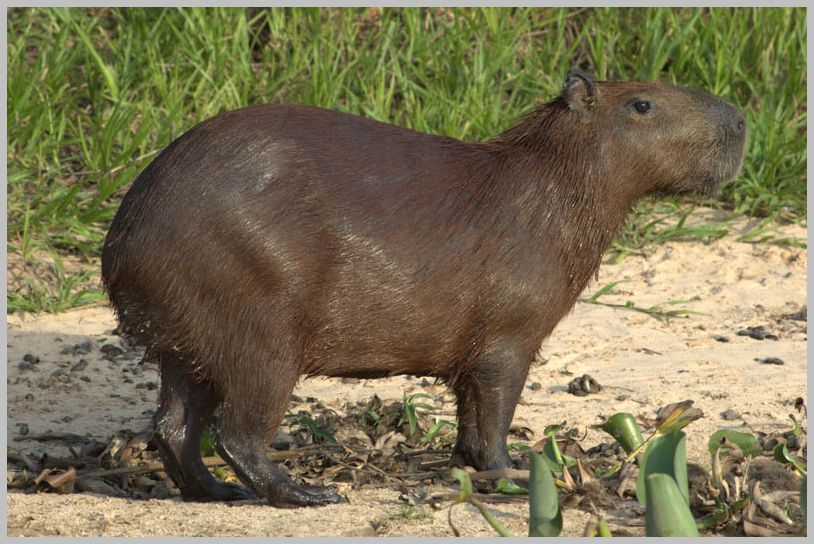
17. The largest rodent in the world: capybara.
The largest existing rodent is the capybara (Hydrochoerus hydrochaeris), a species that is found along the shores of various bodies of water in the tropical and temperate parts of Central and South America, east of the Andes - from Panama to Uruguay to northeastern Argentina. One of the main conditions for the existence of a capybara is the presence of a nearby body of water.
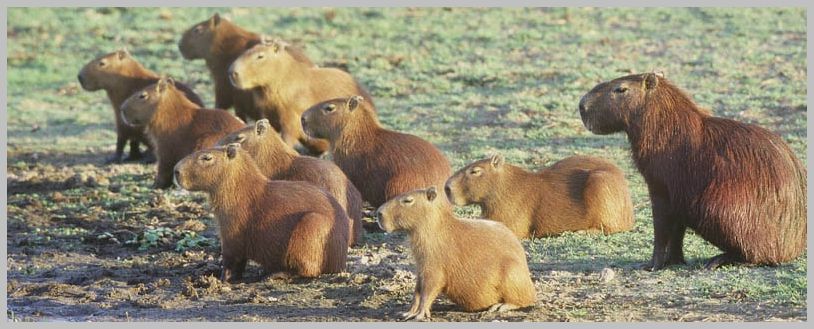
18. The largest capybaras can reach 1.5 meters (4.9 ft) in length and 0.9 meters (3.0 ft) in height at the withers. They can weigh up to 105.4 kg (232 lb). This is a very active species. Capybaras are social animals that live in groups of up to hundreds of individuals, but the usual size of one colony is on average 10-20 individuals.
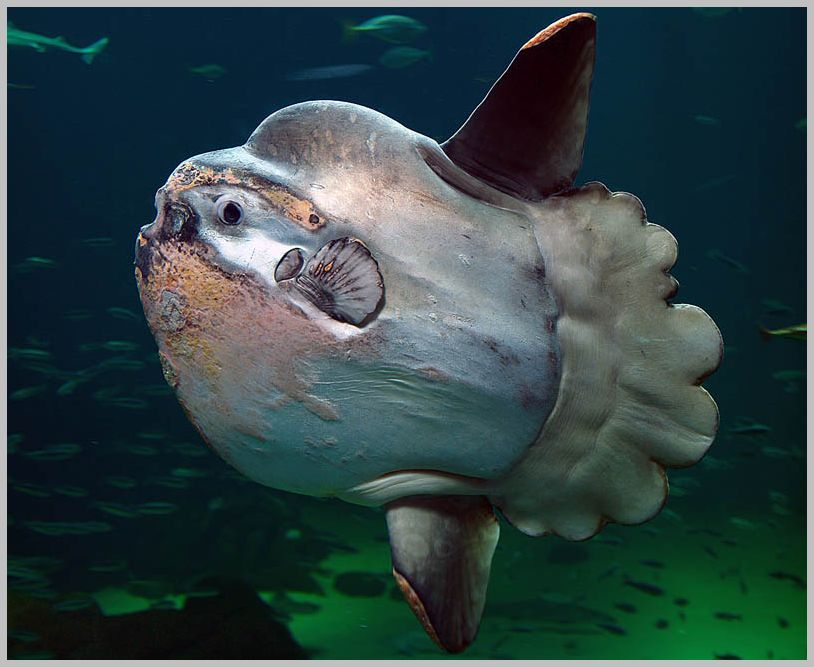
19. Largest bony fish in the world: common sunfish (sunfish, headfish).
Osteichthyes, also called "bony fish", are a taxonomic group of fish that have bony rather than cartilaginous skeletons. The vast majority of fish belong to the species Osteichthyes. This is an extremely diverse and numerous group, consisting of more than 29,000 species. This is the largest class of vertebrates currently existing.
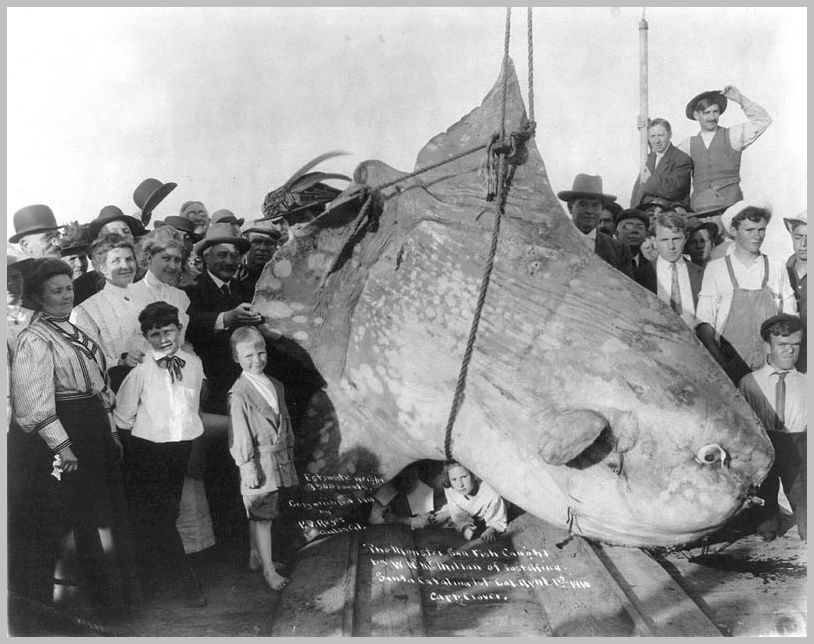
20. The largest representative of bony fishes is the widespread common sunfish (sunfish, headfish) or Mola Mola. It has an extremely strange body shape - it is laterally compressed, very high and short, which gives the fish an outlandish appearance and a disc-like shape. In fact, it does not have a body as such - the sunfish is literally a “head and tail”. Mature Common Headfish have an average length of 1.8 meters (5.9 feet), a fin-to-fin width of 2.5 meters (8.2 feet), and an average weight of 1,000 kilograms (2,200 pounds). However, scientists have recorded individuals that can be up to 3.3 meters (10.8 feet) long and 4.2 meters (14 feet) across. These giants can weigh up to 2,300 kilograms (5,100 pounds).
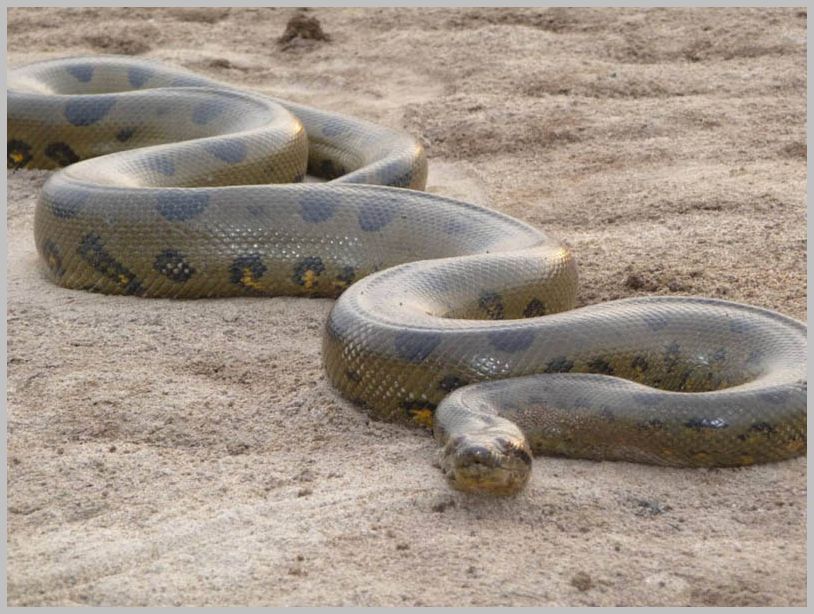
21. Largest lizard/snake in the world: giant green anaconda.
The giant anaconda, sometimes also called the green anaconda (Eunectes murinus), is a species of snake in the subfamily Boa constrictors. It lives in the tropical part of South America east of the Andes, Paraguay, Northern Bolivia, and French Guiana. The maximum recorded body length is 7.5 meters (25 feet), and the maximum recorded weight reaches 250 kilograms (550 pounds), although there are rumors of green anacondas being much larger. The reticulated python (Python reticulatus) of Southeast Asia is larger in body length but slimmer, and members of this species are reported to reach a maximum length of 9.7 meters (32 ft).
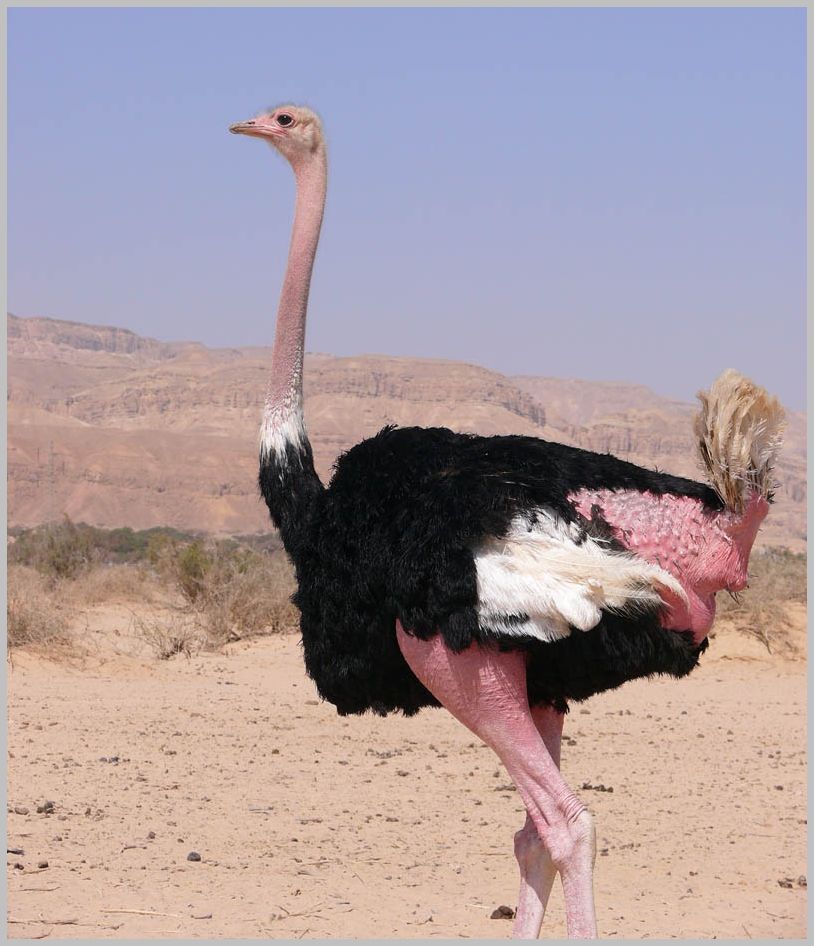
22. The world's largest bird: ostrich.
The ostrich, the largest bird on our planet (Struthio Camelus), is found on the plains of Africa and Arabia. The scientific name of ostrich comes from Greek and means “camel sparrow.” A large male ostrich can reach a height of 2.8 meters (9.2 feet), and weigh more than 156 kilograms (345 pounds). Ostrich eggs can weigh up to 1.4 kilograms (3 pounds) and are the largest bird eggs in the world. modern world. Ostriches can run at a top speed of up to 97.5 km/h (60.6 mph), making the ostrich the fastest bird on earth and the fastest bipedal creature in the world.
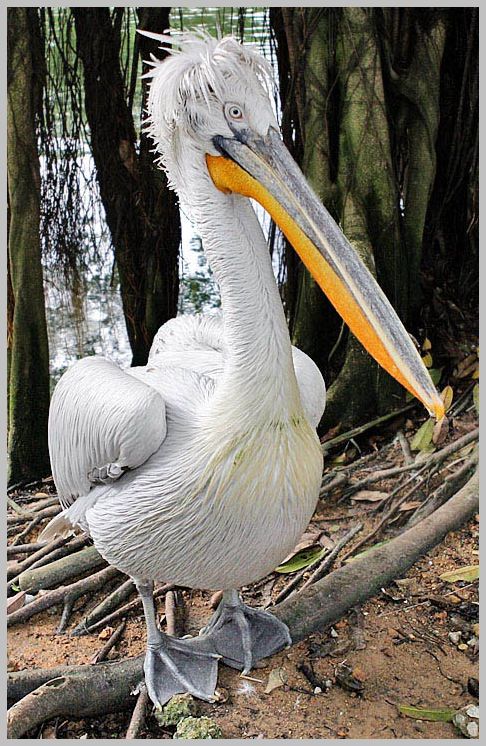
23. The heaviest flying bird in the world: Dalmatian pelican.
The Dalmatian pelican (Pelecanus crispus) is a member of the pelican family. The Dalmatian Pelican's habitat covers a large area from South-Eastern Europe to India and China. Dalmatian pelicans live in swamps and shallow lakes. It is the largest of the pelicans, and on average members of this species can reach 160-180 centimeters (63-70 inches) in length, and weigh 11-15 kilograms (24-33 pounds). The Dalmatian Pelican has a wingspan of just over 3 meters (10 feet). With an average weight of 11.5 kilograms (25 lb), the Dalmatian Pelican is the heaviest flying bird. Although a large male bustard or swan can exceed a pelican in maximum weight.
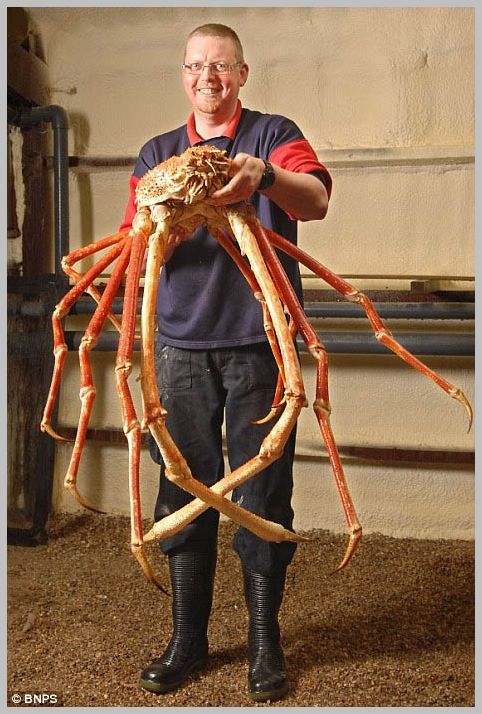
24. Largest arthropod in the world: Japanese spider crab.
The Japanese spider crab is a species of sea crab that lives in the waters off the coast of Japan. It has a leg span of 3.8 meters (12 feet) and can weigh up to 41 pounds (19 kilograms).
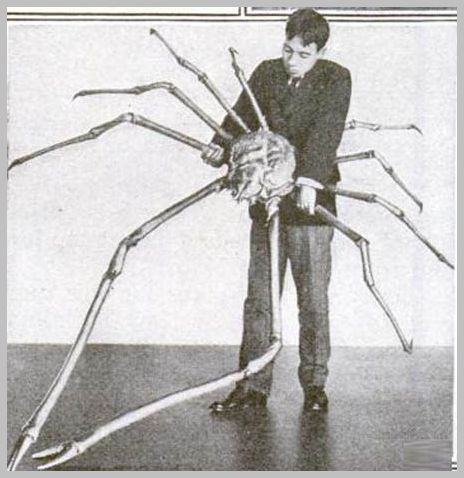
26. In its natural habitat, the Japanese spider crab feeds on shellfish and animal carcasses and can live up to 100 years.
Animals are multicellular organisms with a nervous system and the ability to obtain food for themselves. Conventionally, animals can be divided into two large groups: and. Invertebrates include all animals that do not have a vertebra (about 97% of species known to science). Vertebrate organisms include the following classes (groups) of animals: mammals, birds, reptiles, amphibians and fish. In this article, you will discover the main groups of animals that live on planet Earth, ranging from the simple (invertebrates) to the most complex (mammals).
1. Invertebrates
The first representatives of this large group of animals appeared a billion years ago. Invertebrates are characterized by the absence of a vertebra, an internal skeleton, and relatively simple anatomy and behavior, at least compared to most vertebrates. To date, invertebrates comprise an incredible 97% of all described animal species. This diverse group includes such classes and types of animals as insects, worms, octopuses and countless others.
2. Pisces

The first true vertebrates on the planet, fish evolved from invertebrate ancestors about 500 million years ago, and have been the dominant group of animals in the world's oceans, seas, lakes and rivers ever since. The modern classification of fish includes: one superclass (), three classes (ray-finned fish, lobe-finned fish, and), as well as two superorders (lobe-finned fish and lungfish). Fish breathe using gills, and are equipped with lateral lines that detect vibrations and water currents.
You can get more information in the article "."
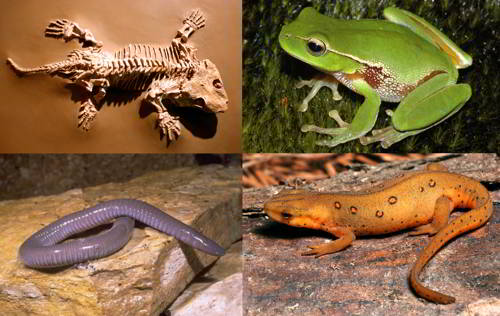
4. Reptiles (reptiles)
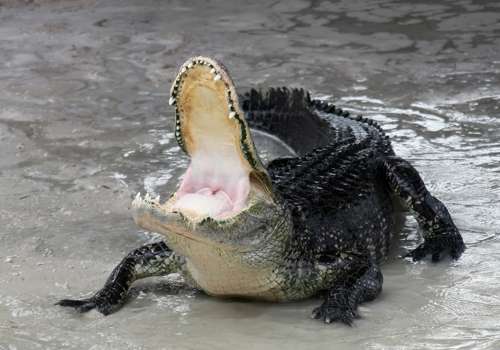
Reptiles, like amphibians, make up a fairly small proportion of land animals, but during the age of dinosaurs, they ruled the earth for more than 150 million years. Reptiles include: crocodiles, alligators, turtles, snakes and lizards. The characteristic features of the adjoining ones include cold-blooded metabolism - their body temperature and activity depends on environmental conditions, as well as leathery eggs, which, unlike amphibians, can be located at some distance from bodies of water.
5. Birds
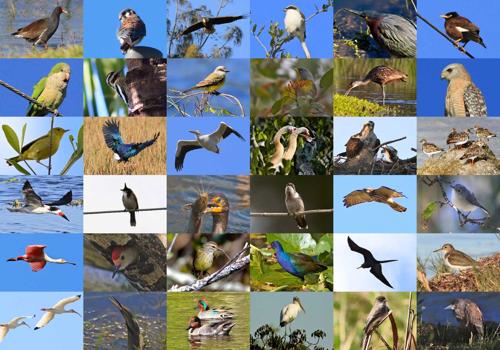
Birds evolved from dinosaurs, probably several times during the Mesozoic era. Today, they are the most widespread flying group of vertebrates, numbering about 10,000 species scattered across 30 separate orders. Birds are characterized by their plumage, warm-blooded metabolism, memorable songs (at least in some species), and the ability to adapt to a wide range of habitats, from the hot plains of Australia and Africa (eg, ostriches) to the cold coast of Antarctica (eg, penguins).
6. Mammals
It is natural for humans to view mammals as the pinnacle of evolution - after all, humans themselves belong to this class of animals. In fact, mammals are among the least diverse groups of animals (there are only about 5,000 species). Mammals are characterized by: fur, mammary glands (which produce milk for feeding their young), and a warm-blooded metabolism, which, as in the case of birds, allows them to cover a wide range of habitats, ranging from deserts and oceans to the Arctic tundra.
The world is home to many amazing animals. Birds, fish, insects - you name it on our populous planet! Some species are very rare and cannot be found in the wild, others are common on just one continent, and still others can be found in our country. What is the largest animal on Earth? A few million years ago, dinosaurs could certainly boast of their size. Now it is impossible to answer this question unambiguously, but we can present you with a list of huge birds and animals.

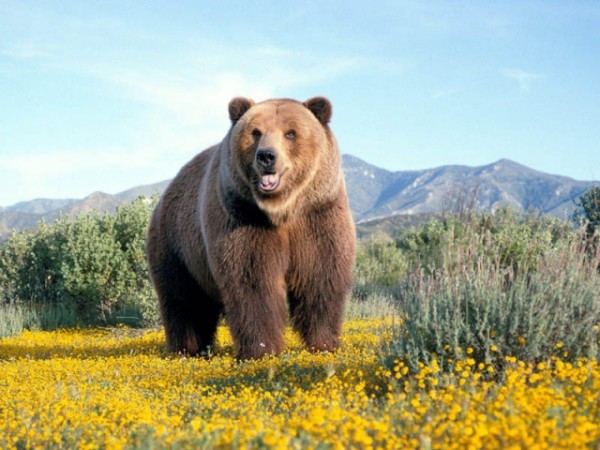

1. Blue whale
The largest animal in the world is a creature that does not leave the depths of water. This is a blue whale. Its length reaches 30 meters and its weight reaches 180 tons! It is impossible to imagine, but one whale tongue weighs 3 tons. The fountain of water that the whale releases when breathing reaches a height of 10 meters. The blue whale is the largest animal on Earth. One heart sea monster weighs 600 kg, it is the largest internal organ on the planet. The lungs of a blue whale pass 3 thousand liters of air in one breath. The animal's diet consists mainly of shrimp. The blue (blue) whale is the largest animal in the world.
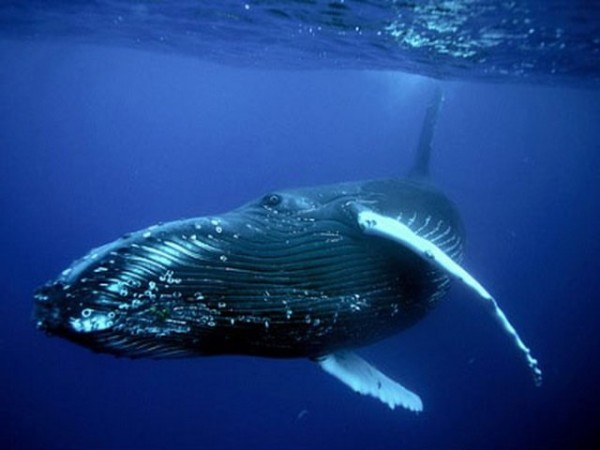


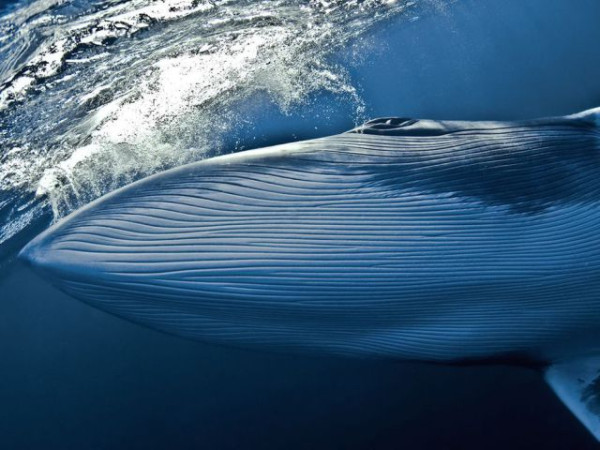
2. African elephant
If we talk about land representatives of the earth's fauna, then here too there is someone to boast about their size. We're talking about elephants: the African elephant weighs approximately 6 tons and its body is 7 meters long. An adult female is almost half the size of a male, but it is still the largest land mammal. About African elephants known amazing facts: they sleep standing up and know how to mourn the dead, which makes them look like people.
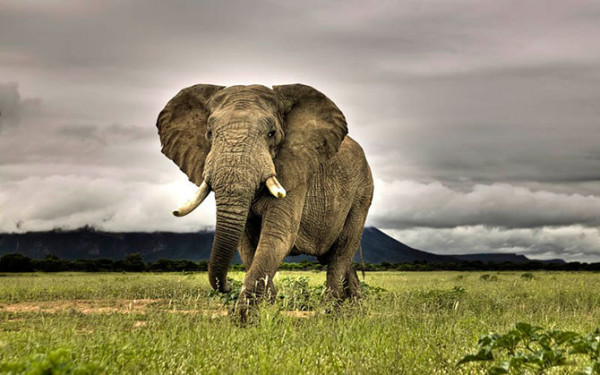

3. Giraffe
In another plane, the largest animal on Earth is elongated in height. Of course it's a giraffe. A five-meter adult male weighs at least 1500 kg. The neck is half the height of a giraffe. Nature has endowed the animal with a long cervical spine.

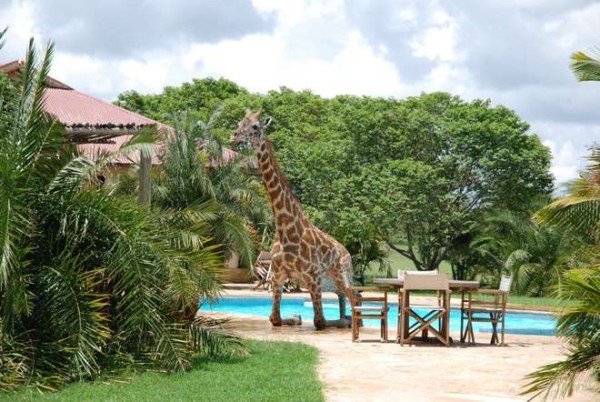
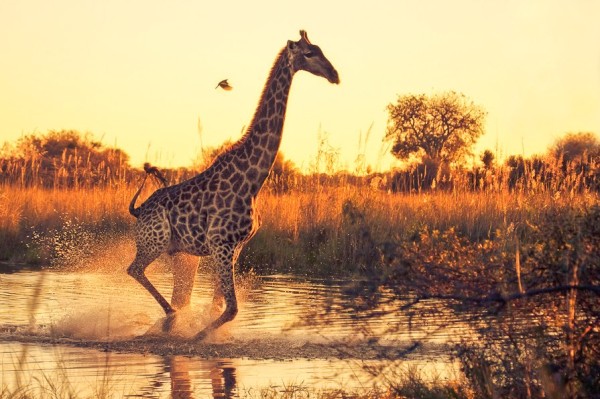
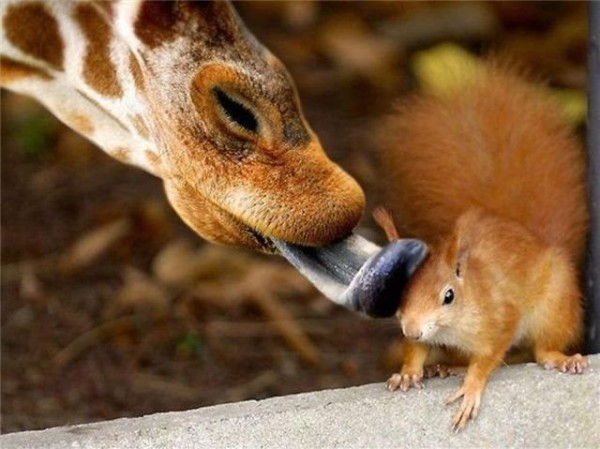
4. Elephant seal
Among predators, the elephant seal is the largest animal on Earth. The spread in the weights of individual individuals can reach a difference of several times, which cannot be the case for other living beings. Huge warlike males weigh almost four tons in their better times. The weight of females rarely exceeds 800 kg. The body length of elephant seals can reach 6 meters.

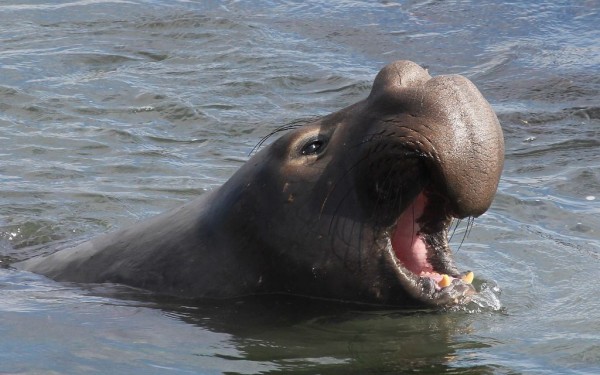
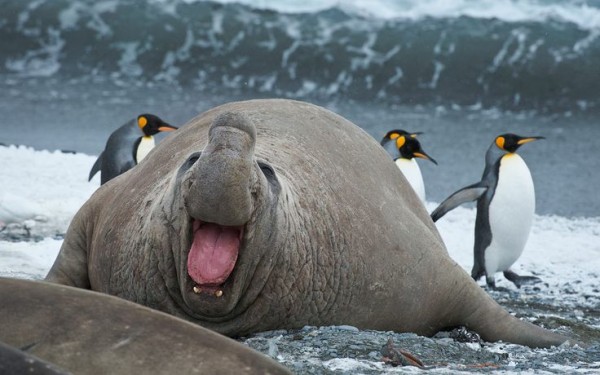
5. Brown and polar bears
On land, another predator can rival the elephant seal in size. Brown and polar bears weigh almost the same, so the palm will go to both. The three-meter-long owner of forests and ice has a body more than three meters long.

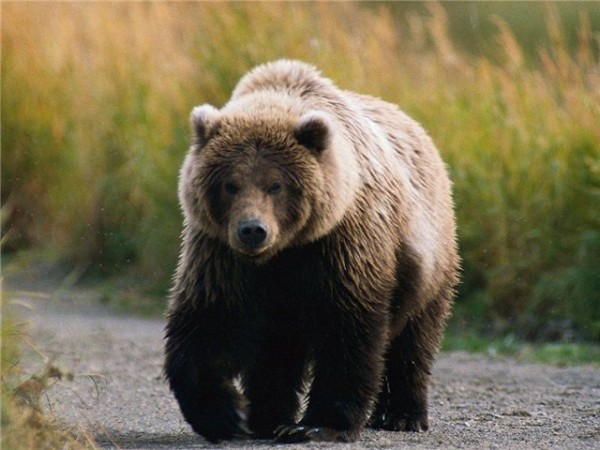
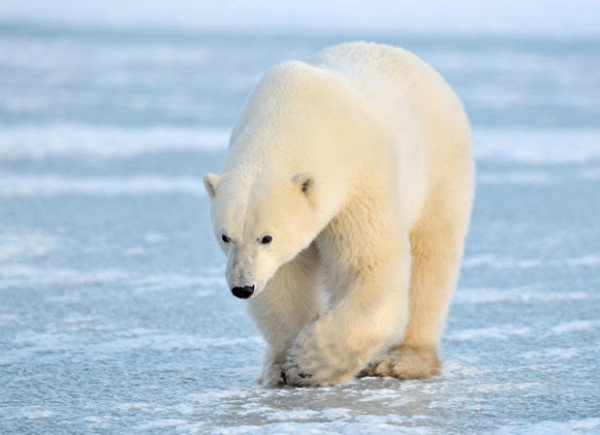

6. Hippopotamus and rhinoceros
Don't forget about the giant hippos. Their weight is from 3 tons, and their length is from 3 to 5 meters. After the hippopotamus, we cannot help but mention the rhinoceros - the formidable guardian of Africa. Despite the solid horn located on the nose and the huge mass (from 3 to 8 tons), rhinoceroses are herbivores.
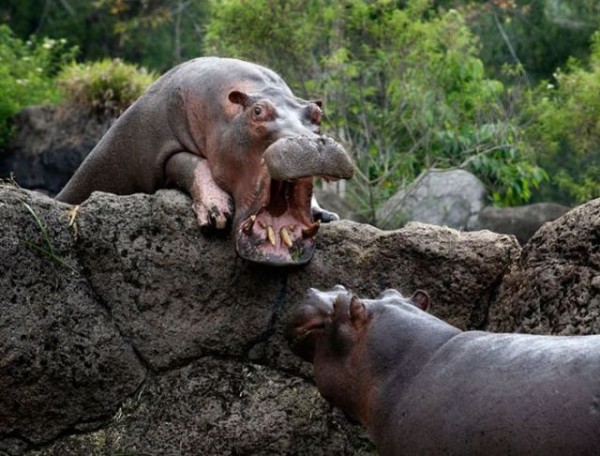


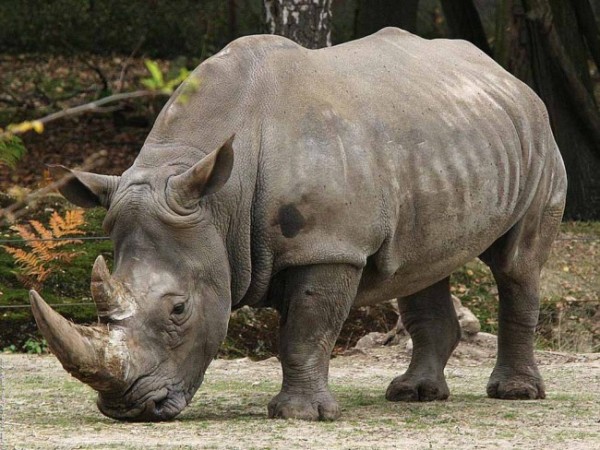
7. Crocodile
The largest animal in the reptile world is the crocodile. Residents of India, Australia and the southern regions of Asia can admire this amazing creature every day, not forgetting that the crocodile hunts all living things in the area, on land and in water. An adult crocodile weighs about 1000 kg, body length is 4-5 m. Moreover, a five-meter individual is not something out of the ordinary. Old crocodiles can be larger than the largest animals in the world. Interestingly, the closing force of the crocodile's mouth is so great that if it slams shut, it is almost impossible to open it. Such tricks may be possible for a person, but random prey will never escape from the jaws of a crocodile.
![]()
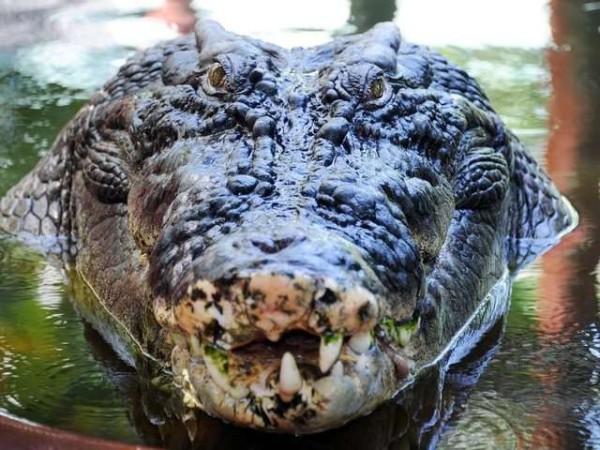
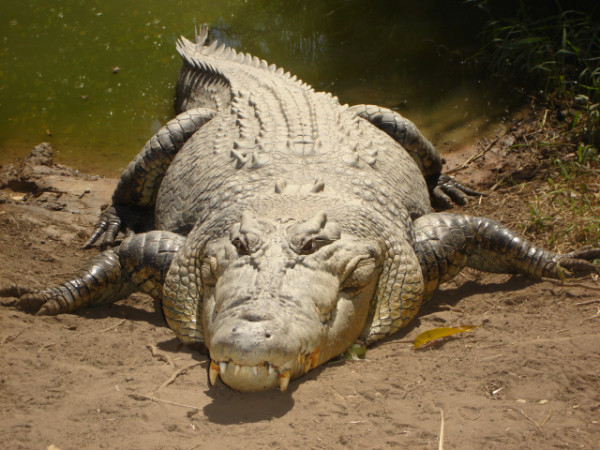
8. Rabbit
The more defenseless and furry inhabitants of the planet also deserve special attention. Flemish rabbit grown under special conditions. An adult male weighs about 15 kg, which is approximately the weight of a heavy average dog. Propagation began in medieval Ghent.


9. Bat
Among the miniature-looking bats there are large individuals. It is not the largest animal in the sea, but it is one of the creepiest. The appearance of bats in cinema and literature is often associated with the appearance of something dark and mystical. The wingspan of the bloodsucker is almost two meters. Weight of the golden-crowned flying fox, the largest bat, about 1.5 kg.
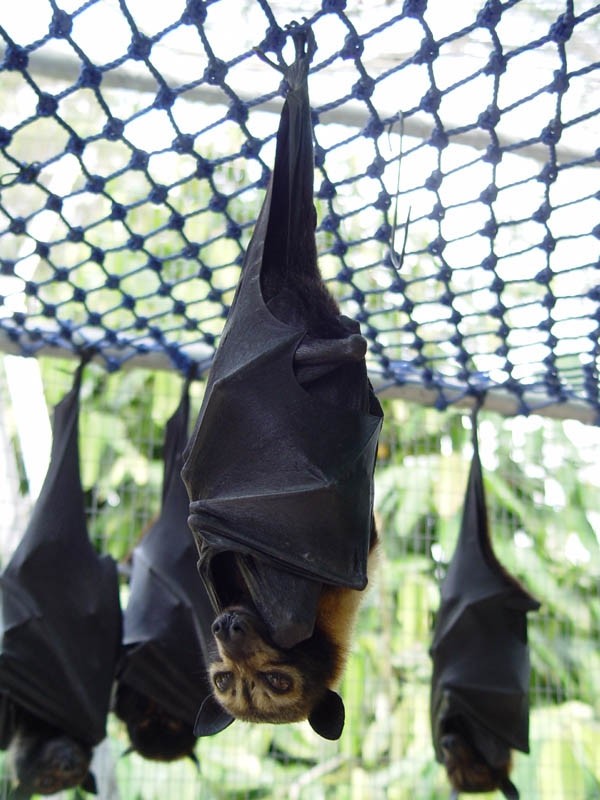
10. Capybara
Capybara ( guinea pig) is one of the largest animals in the rodent world. Translated from the Guarani Indian language, “capybara” is translated as “lord of herbs.” Lives in South America in the Andes. Their natural habitat is in caves near water. It's surprising that a huge guinea pig gets along easily with humans. The weight of the animal can reach up to 100 kg, the length of the creature is equal to the height of a short girl (150 cm). Capybaras live in small groups of 15-20 individuals. Interestingly, such a group includes one dominant male, females and their young. If another male wants to join the group, he will have to fight with the dominant male.

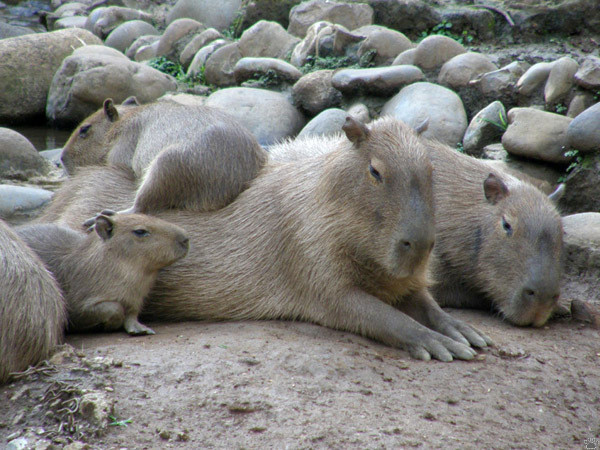
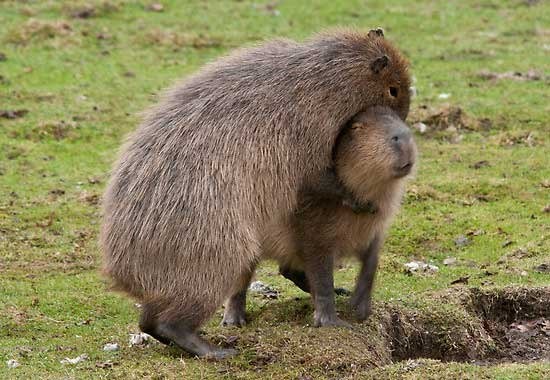

11. Sunfish
Let's return again to sea creatures. Ocean sunfish have a bony backbone. Her skeleton is made of solid bone, not cartilage. The sunfish looks like a head that flows smoothly into a tail. Because of its size (1.8 meters long), it often frightens diving enthusiasts.

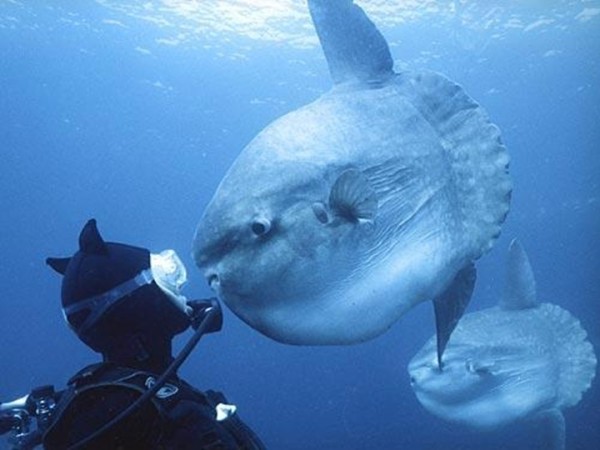
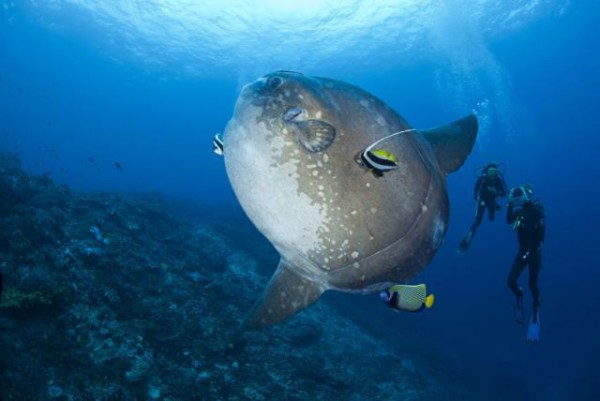

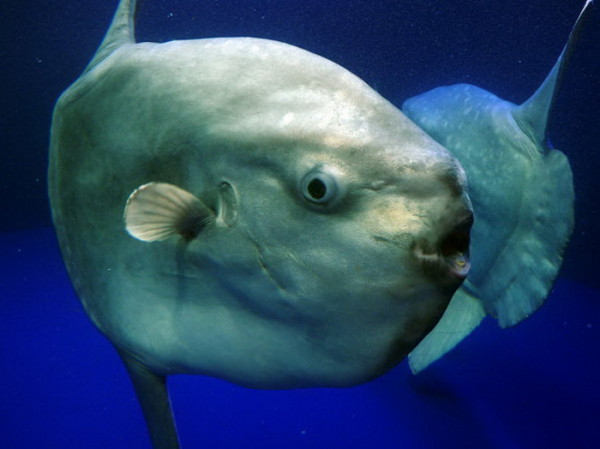
12. Snake
The largest animal in the world of snakes weighs 200 kg. This is a green anaconda. Some scientists say that in wild forests individuals of even greater length live. The anaconda does not kill its prey, much less chew it - it swallows its prey whole.

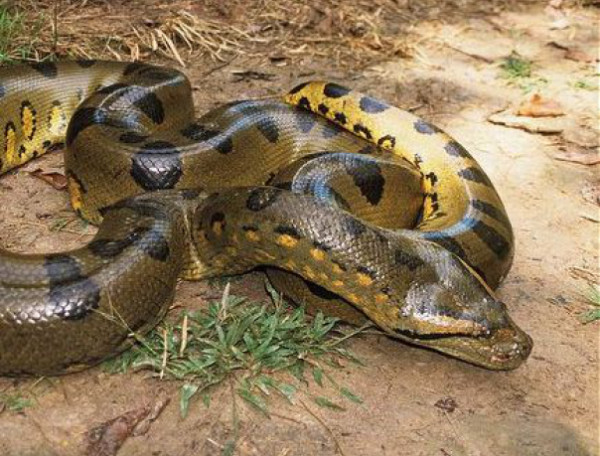

13. Ostrich
The huge bird lives in Arabia and Africa. An ostrich can weigh about 150 kg and its height is 3 meters. Ostrich eggs are a delicacy; one egg can feed ten people. In addition, the ostrich is the fastest bird on earth. It accelerates to 100 km/h.

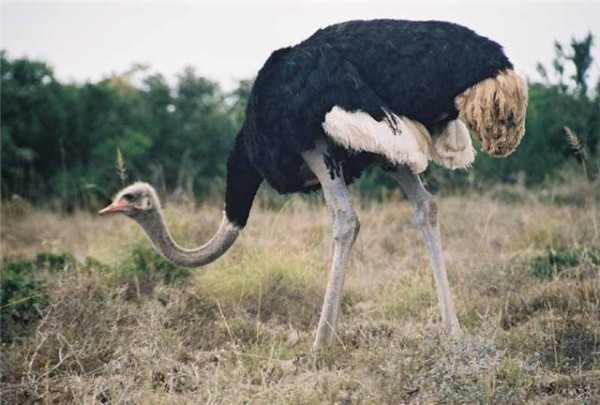
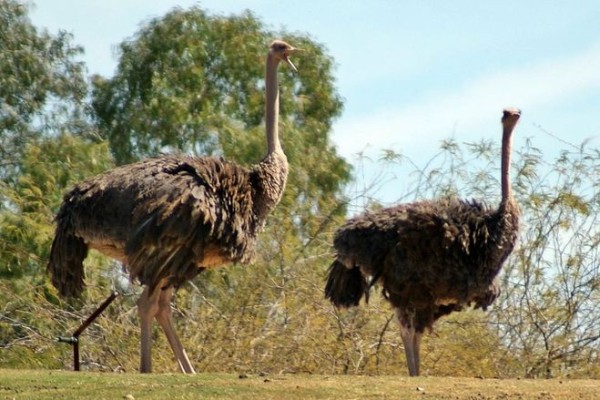
These are the large animals that inhabit our planet.
Krill is a crustacean animal no larger than 5 centimeters in size. In appearance, krill is similar to a shrimp.
Despite the fact that Antarctic krill live only in the Southern Ocean, the number of individuals is incredibly huge, the largest in the world. Krill is harvested on an industrial scale; its meat is considered a valuable environmentally friendly product. In addition, this marine animal is the main food link in many food chains.
The number of krill in the ocean is so huge that when a school swims by, the color of the water changes. There are 30 thousand Antarctic krill per cubic meter of ocean surface. The total mass of this species is 500 million tons. This sea animal is the absolute record holder among all earthly creatures.
The most numerous land class
The most numerous class of land animals are insects. Scientists have counted almost 1.5 million representatives. According to some estimates, the total number of species is about 20 million. In terms of numerical indicators, this is less than the amount of Antarctic krill, but if we take among terrestrial animals, then insects take the lead.
The superiority of insects in numbers over other classes of animals is explained by the fact that they can easily adapt to various habitats, they have several methods of reproduction (bisexual, parthenogenetic (for example, in aphids), asexual), as well as high fertility.
The most numerous birds
When counting the numerous breeds of birds, domestic chickens occupy the leading place. This animal is the most abundant on Earth. There is nothing surprising here, since chicken is bred in almost all countries. There are huge chicken farms and poultry farms. The exact number has not been calculated, but scientists suggest that the numbers could fluctuate around 3.5 billion individuals. It goes something like this: there is one chicken for every two people. But the second place in number is occupied by a little-known bird - the red-billed weaver, about 13 centimeters in size.
If we are talking about the number of animals, then it is interesting to know which pets are the most? Pets, if they do not live in every home, then in almost every one. Statistics show that the most numerous pets are cats. This is probably due to its size and ease of care. The prevalence of breeds is as follows: the first place is shared by Persian and Siamese cats, with the Maine Coon breed on the approach.
Tip 2: Which sea animal is the largest in size?
The largest sea animal is the whale. Moreover, whales are the largest animals not only in the seas and oceans, but throughout the whole world! Whales are mammals, not fish. They breathe not with gills, but with lungs. This is why whales cannot stay underwater all the time - from time to time they still need to rise to the surface of the water to take a breath of fresh air. By the way, it is then that you can see a large fountain over the sea.
